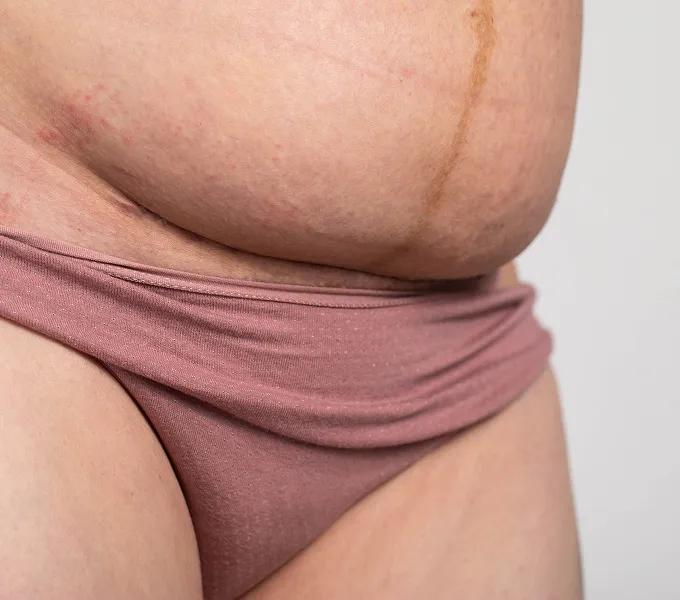
4 Ways to Reduce Shoulder, Back, Neck & Wrist Pain While Feeding
Feeding your baby is demanding work, both physically and emotionally. A majority of people who breastfeed or chestfeedare struggling with common pain issues: aching shoulders, back pain, sore neck, and "mom wrist" (wrist pain from feeding and holding your baby). The good news? You can prevent and reduce most of this discomfort with some simple strategies.
As physical therapists at Origin, we’ve helped countless new moms experiencing breastfeeding joint pain. Below, Dr. Sarah Clampett, PT, DPT, shares four evidence-based ways to prevent and reduce these all too common feedingaches and pains – do try this at home!
1. Start with your posture, before baby arrives
Building good posture during pregnancy is the first step to preventing pain while breastfeeding/chestfeeding. Once your baby arrives, it is all too easy and common to focus on their needs and contort your body to get a latch (who among us has not created a new yoga pose while coaxing a baby onto a boob?).
- In the third trimester, practice simple postural strengthening exercises and belly breathing. This will help increase your awareness of which muscles are engaged when you’re sitting.
- When feeding, your ideal position is:
- Shoulders down and relaxed (not near your ears)
- Sit back in a chair, with your back straight from pelvis to head
- Chest open and upper back activated
- Practicing this before baby comes lets your body "reset" to it after birth. You’ll notice that to maintain this posture your baby has to come to you.
Expert Tip:
“The default feeding position can be to slouch forward. The curved spine position with shoulders and head forward, back unsupported and hands positioning the baby's head creates strain on lots of muscles. If a mom has done prehab it is easier to recognize when this is happening and there is some muscle memory that helps them to reset.” -Dr. Sarah Clampett, PT, DPT
2. Use props to support your body
Many breastfeeding/chestfeeding. aches arise from poor support. Correct use of pillows, rolled towels, and footstools can prevent back and wrist pain.
- Place a rolled towel behind your lower back for lumbar support
- Use a footstool to keep feet planted and support your pelvis and lower back (dangling feet strains your back)
- Feeding pillows are essential: pile them up to bring your baby to just above nipple level (not your boob to baby!)
Why this matters: Proper support helps avoid slouching, prevents lower back strain, and keeps your neck and wrists pain-free.
3. Protect your wrists & hands to prevent "mom thumb" or “mom wrist”
Wrist pain (breastfeeding "mom wrist" or "mommy thumb") is very common due to repetitive hand positions.
- Support your hand and wrist: use rolled blankets or pillows to prop your elbow and hand.
- Avoid using your wrist to support your baby’s entire weight; focus only on steering their head.
- Use the "bring baby to you" mantra; don’t hunch or twist your wrist toward the baby.
- Be mindful of symptoms like thumb pain or stiffness, and adjust your hold as needed.
Quick Fact: Lower estrogen levels during breastfeeding/chestfeeding can increase stiffness by decreasing the integrity of the tissues; so extra support goes a long way.
4. Focus on baby’s & your alignment
Your baby’s position affects your own. Poor alignment can force you to twist, hunch, or overuse your wrists, neck, and shoulders.
- Tummy-to-tummy: Try to keep your baby facing you. If they turn away/out, you’ll compensate with poor posture.
- Try several different feeding holds (cradle, cross-cradle, football hold, side-lying) to find what’s most comfortable for both of you.
- Remember that what works one day may not the next, so adjust as needed!
Bonus: Practice belly breathing often
Belly breathing (aka diaphragmatic breathing) is a powerful way to coordinate and increase awareness of your core, pelvic floor, and posture muscles. It involves breathing ‘into’ your belly, activating your abdomen while relaxing your chest.
How to do it:
- Sit upright, place one hand on your belly
- Inhale slowly through your nose, filling your belly (not just your chest)
- Exhale slowly through pursed lips
- Do a few cycles before each feed to reset your posture.
Expert Tip:
“Breathing is the foundation of everything. We teach belly breathing to all of our patients. If you are breathing with your chest, or shoulders you are not going to be able to recruit your abdomen and the muscles in your mid back, which you need for proper posture and strengthening.” -Dr. Sarah Clampett, PT, DPT
Progress, Not Perfection
At the end of the day, try to be gentle on yourself both physically and emotionally. Pregnancy brings a whole lot of change spread over 40 weeks, but that postpartum period is the opposite; lots of change all at once. It's easy to focus all your attention on your baby and sometimes that means it takes longer to notice your own comfort, or discomfort.
Remember that if your feeding position isn’t perfect every time, that’s okay! If you have a challenging feed where things don’t feel right, remember that ups and downs are normal. It is never too late to recenter, find where your body needs to be and try again next time. If you need support with any of this, we’re here to help! Our team of physical therapists specialize in supporting moms throughout their entire journey.




